It’s push day, and believe it or not, that means you’re going to be working out all the muscles that you push with. Push muscles have the functional benefit of being able to help you complete activities of daily living, like moving furniture, opening heavy doors, or lifting something overhead.
A total body push workout addresses these muscles in both the lower and upper body to make you stronger than ever. Here are some of our favorite exercises to incorporate into your next push-day routine.
What Are Push Muscles?
Push muscles are aptly named because they refer to the muscles you push with. One of the most prominent push muscles is the pectoralis major or your chest. But push muscles in the upper body also include your front and lateral (side) deltoids, or shoulders, as well as your triceps.
In the lower body, the largest push muscles of the leg are your quadriceps or thighs. But your calf muscles are also used prominently in many lower-body push exercises.
In a total body push workout, it’s important to address all these muscles equally, using progressively heavier weights each time you hit the gym. This will help you gain muscle mass while making you look bulkier and shredded.
What Are Some Lower Body Push Exercises?
Your hamstrings and glutes can have a bit of a break today as we focus on your quads and calves. With that said, many push exercises will still incorporate the postural “pull” muscles on the backside of your body as well.
Squat
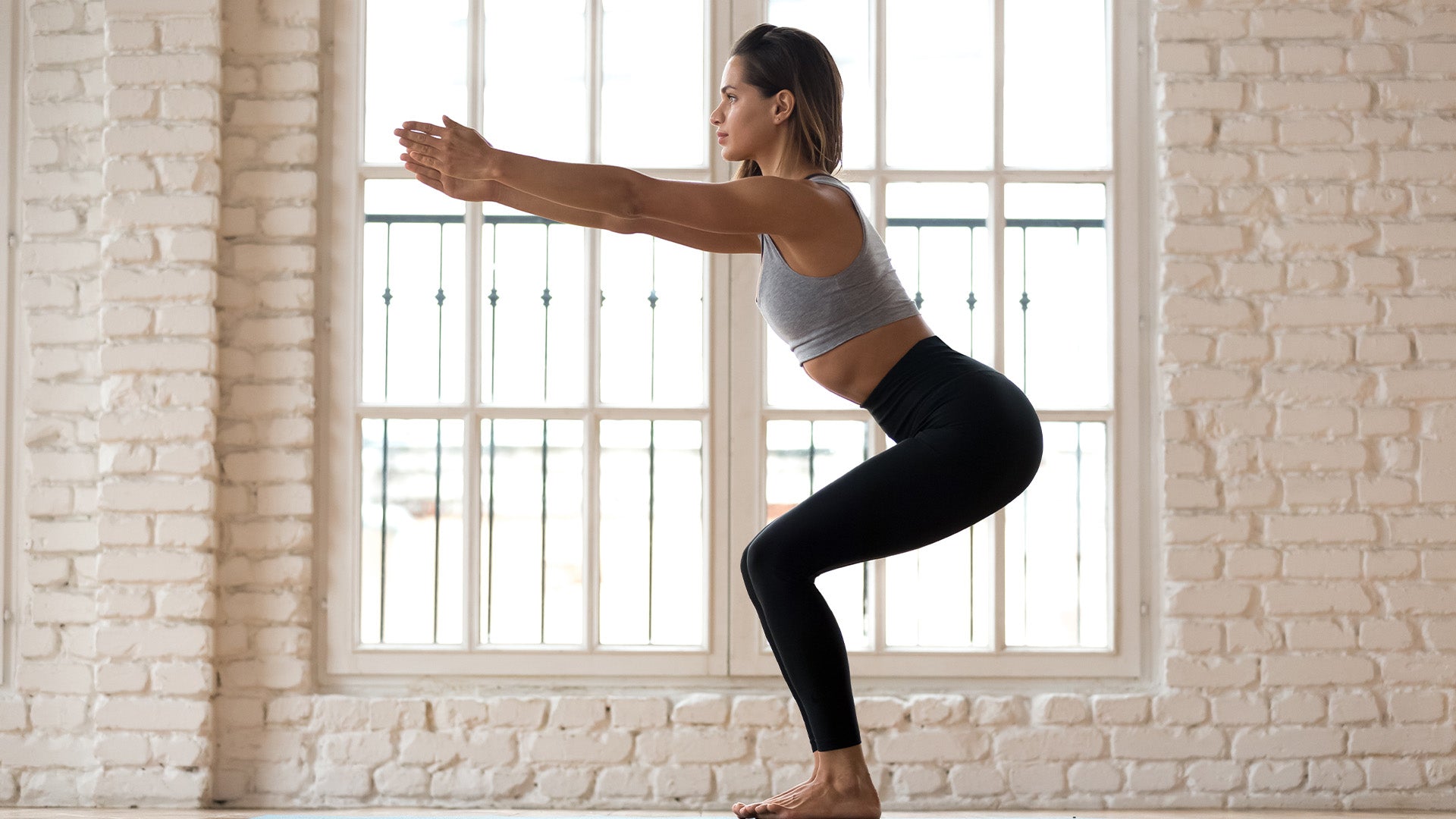
The squat is one of the most popular lower-body push exercises for a good reason. While it primarily targets the quadriceps, it also requires core stabilization and glute activation. This makes it an effective lower-body workout overall.
And the greatest thing about the squat is that it has never-ending variations. The goblet squat is one of the most accessible, where you hold a single dumbbell at your chest like a chalice. But you can also do suitcase squats with dumbbells at your sides, front squats with dumbbells at your shoulders (great for the core), or back squats with a barbell on your rear shoulders.
If you’re targeting the quads on your push day, you want to ensure that your feet are about hip-width apart. The further away your feet are from the midpoint of your body, the more you’re targeting the glutes and the hips as opposed to the quads.
Reverse Lunge
A reverse lunge targets the same muscles as a forward lunge. The only difference is that this move tends to be a little bit safer, especially for people who have knee pain when applying weight to the lower body.
When doing a reverse lunge, try to drop that back knee as close to the ground as possible without slamming it into the ground. The move is most effective when you can apply weight to the shoulders for core activation, either with dumbbells or a Bulgarian bag.
A reverse lunge targets the quads, but you can activate the glutes and hips by turning it into a curtsy lunge. With these, you’ll bring that back knee directly behind the front knee, just like you’re curtsying. You can also add some cardio to a reverse lunge by doing jump lunges as an alternative to weighted lunges.
Calf Raise
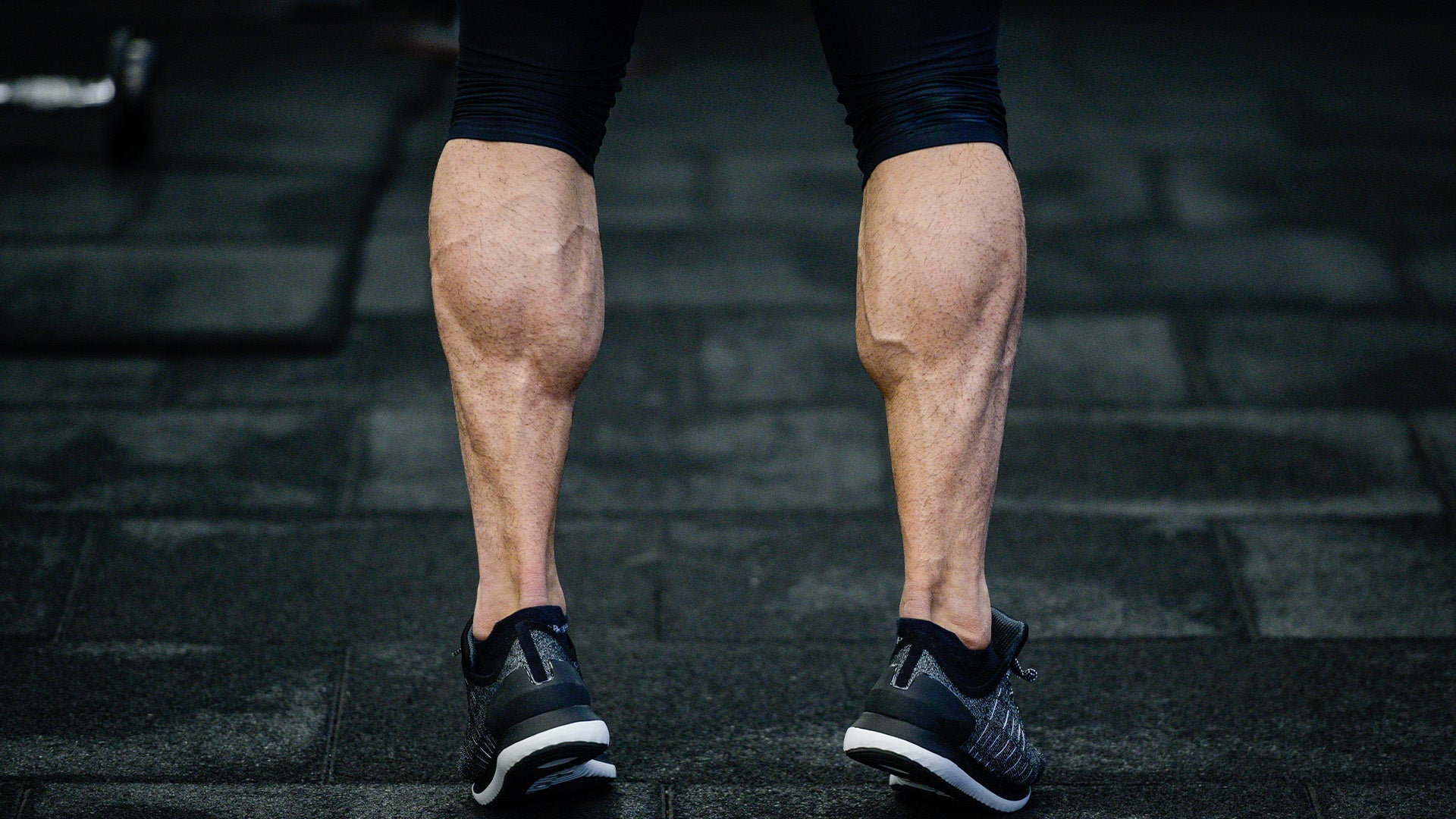
The calves are an often underworked muscle that allows you to propel yourself forward when you run or walk. Better strength in this muscle can help you run faster while avoiding injuries during strenuous cardio activities.
Calf raises can be done standing on a flat floor, but you can get a better stretch of the muscle by placing the ball of your foot on a plate. This allows you to get the maximum range of motion in the calf muscles for greater muscle gains.
Bulgarian Split Squat
The Bulgarian split squat is loved just as much as it is hated. We love it because it is one of the best lower body exercises of all time, but we also hate it because it might have you crawling out of the gym by the time you’re done with them.
Normal split squats are great, and these target the quads most heavily. Think of a split squat like a lunge, except instead of pushing your body forward, you’re just lowering your body down to the floor.
But with a Bulgarian split squat, you’ll elevate the back leg onto a bench. This forces your working leg to activate more heavily, working your quads more effectively. However, it also helps with hip stability by working to keep your balance as you work on a single leg.
What Are Some Upper Body Push Exercises?
The push muscles of the upper body include the chest, the triceps, and the shoulders. Working these muscle groups can help you look more toned overall while also allowing you to avoid injury.
Bench Press
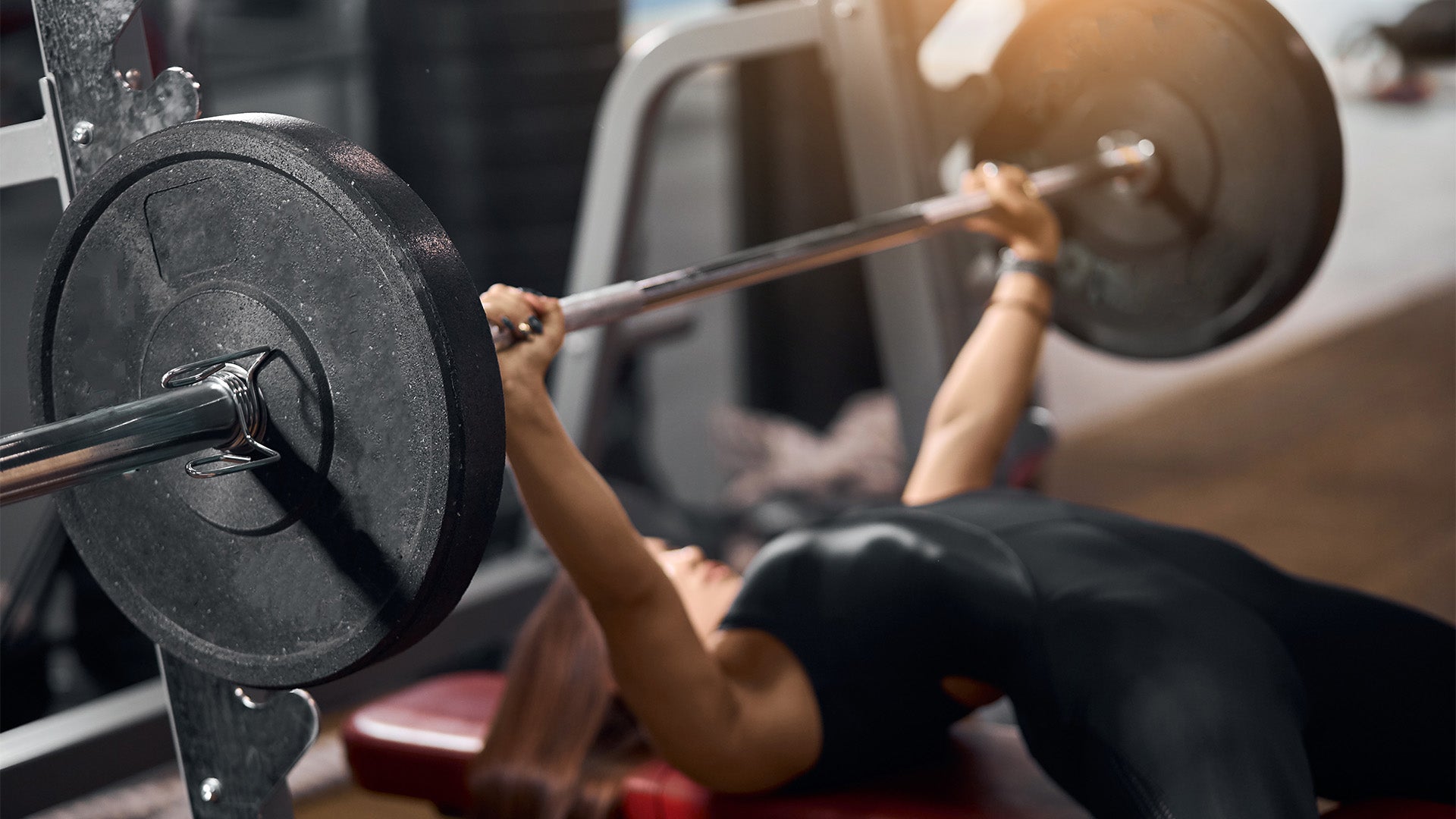
The bench press is the most touted exercise for building chest muscles, especially because it incorporates the shoulders and triceps. Plus, a bench press has endless variations to better target different parts of the pectoralis.
There are two main portions of the chest muscle: the sternal head and the clavicular head. The sternal head is in the center of the pec, and this is what you’re focusing on when you do a flat bench press. But if you do an incline press with the bench at a 30-45 degree angle, you are working the clavicular head to target the upper chest.
You can also do a bench press with dumbbells. A close-grip chest press will target the triceps more heavily, or you can do alternating dumbbell presses to address muscle imbalances on either side of the body.
The only issue with a bench press is that you get maximum muscle activation at the bottom and center of the movement. Once you lift the weight toward the sky, you lose muscle force due to the strength curve. The strength curve is related to how muscles exert different amounts of force at different portions of the range of motion.
It’s impossible to fix this through traditional training, but Speede uses technology to turn the tides. With smart AI technology, Speede automatically adjusts to your body’s strength curve, ensuring that you use the perfect resistance at every portion of your rep. This means you’ll get stronger in just a fraction of the time.
The best way to see the difference is to feel it for yourself. Book a demo today and see how Speede can get you the results you’re looking for faster than ever.
Arnold Press
When it comes to working your shoulders, there aren’t many better exercises than a classic shoulder press. However, an Arnold press works both the front delts and the lateral delts, taking the typical shoulder press to new heights.
With an Arnold press, you’ll start with the dumbbells in front of your eyes, palms facing you. As you lift the weights overhead, you’ll rotate your palms outward so they are facing away from you instead.
If you start to get fatigued during your set, you can always alternate one arm at a time as well, just so you can keep moving without stopping.
Lateral Raise
The lateral raise targets the lateral delts better than most other exercises. This move activates the traps, the muscles above your shoulders that jut out from your neck. Lateral raises are a challenging move that will likely require you to use a lower weight than your usual overhead press.
Cable Tricep Pushdown
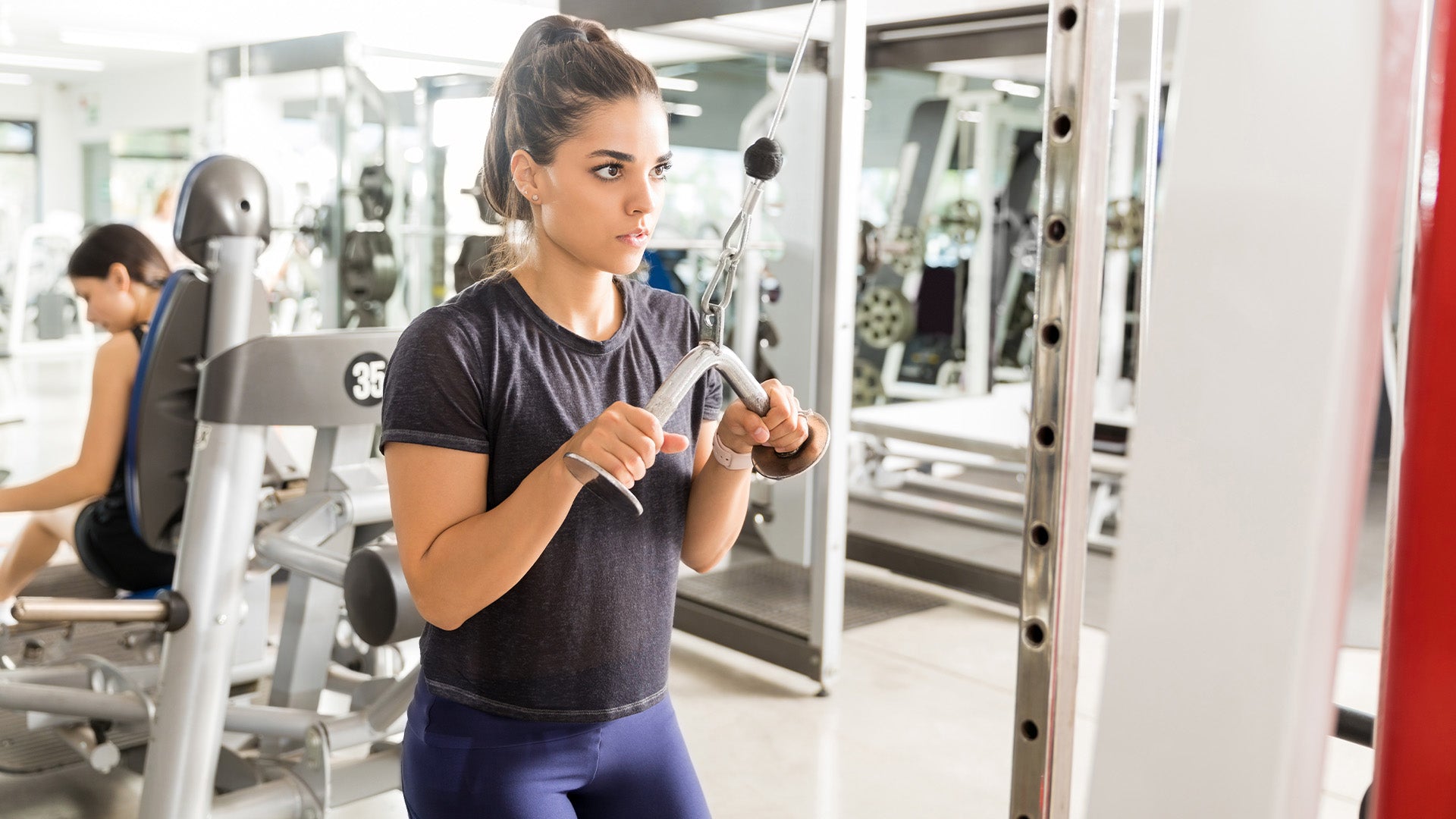
Some of the best push exercises have the word “push” right in the name, and the cable tricep pushdown is no exception. This is one of the best exercises for the triceps because it allows you to get a full range of motion while also ensuring that you’re working under tension the entire time.
If you’re having trouble feeling this in your triceps, try twisting your wrists outward slightly at the bottom of the movement. This will force you to activate your triceps even more.
Again, the only issue is that you lose muscle activation at the top portion of the range of motion. Speede eliminates the weakness of traditional training by adjusting the resistance as your velocity of motion remains the same.
What Are Some Total Body Push Exercises?
Incorporating total body exercises into your push routine not only hits every single push muscle group at one time, but it also effectively burns more calories than your traditional single muscle moves. Here are some of our favorites.
Dumbbell Snatch
Developing power and explosivity throughout the body can help you drive heavier weights during your training sessions, which will only serve to increase your gains over time. A dumbbell snatch is one of the greatest power movements ever, and it can make your quads and shoulders look huge.
With a dumbbell snatch, you’ll press through the floor with your legs to drive a heavy dumbbell overhead. Since you’re primarily using your legs to bring the weight up above, you can go heavier with the weight than you typically would on a shoulder press.
Just be sure to alternate sides so that you train each arm evenly.
Dumbbell Thrusters
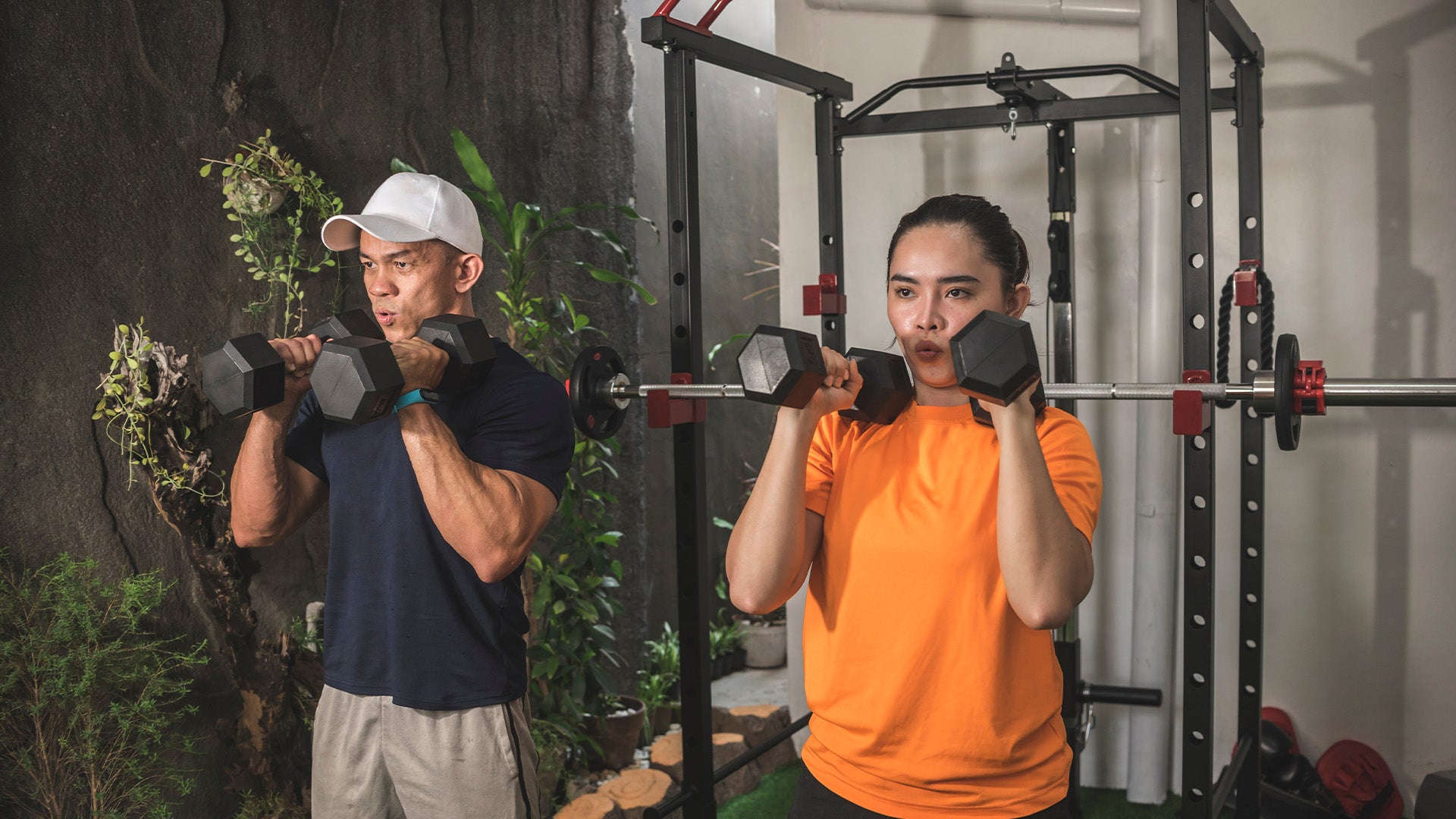
Thrusters are a combination move between a squat and an overhead press. This combo movement not only burns calories but also allows you to use heavier weights since you’ll be using lots of power from the legs.
Start in a squat, then press through the floor with power, reaching the dumbbells up overhead at the top. Be sure to keep your core engaged during the squat. This exercise is effective at working multiple muscle groups at one time.
You can also do single-arm thruster rotations, which incorporate the calf muscles when you pivot the legs during each press.
Knee Tuck to Push Up
This is another combination movement that uses some cardio in addition to upper body strength. With a knee tuck, you’ll work out your abs and quads as you bring your knees closer to your chest. And for the push-up, you’ll target the muscles of the chest, triceps, and shoulders.
You can target your chest more by putting your hands into a “diamond” formation or your triceps more by tucking your elbows into the side of your body. You can also swap out the knee tucks for plank jacks or mountain climbers to work similar muscle groups.
In Conclusion
Push day is one of the most fun days of any training plan, and if you only have time to hit the gym two to three times a week, you want to make sure that you’re incorporating total body push movements into your workout.
For the lower body, you want to target the quads and calves with moves like squats and calf raises. For the chest, shoulders, and triceps in the upper body, bench presses, Arnold presses, and tricep pushdowns are key. And you can combine the two with moves like thrusters or snatches.
But getting gains might not have anything to do with your workouts themselves — it might be entirely related to the equipment you’re using. Speede is a revolutionary piece of workout equipment that can adjust to your body’s strengths and pinpoint areas of improvement, allowing you to get a more comprehensive workout in just a fraction of the time.
See the difference for yourself. Book a demo today and learn how Speede helps you get stronger faster.
Sources:
Anatomy, Shoulder and Upper Limb, Deltoid Muscle – StatPearls | NCBI Bookshelf
Are All Lunges Created Equal? | American Council on Exercise
Calf Muscle: Anatomy, Function and Common Conditions | Cleveland Clinic.

